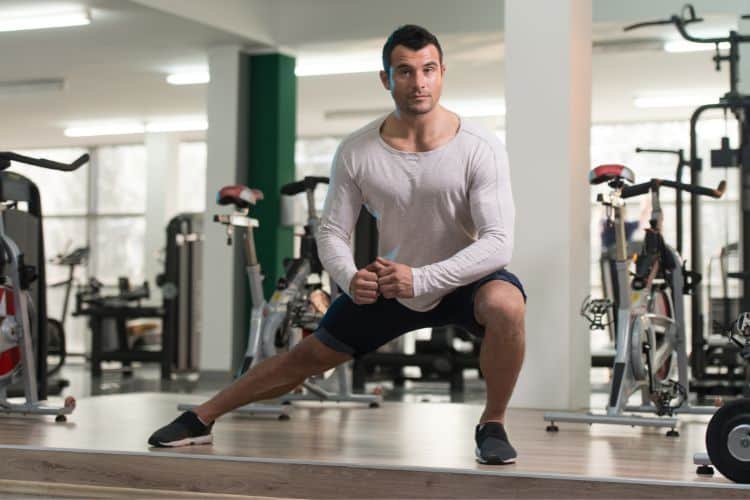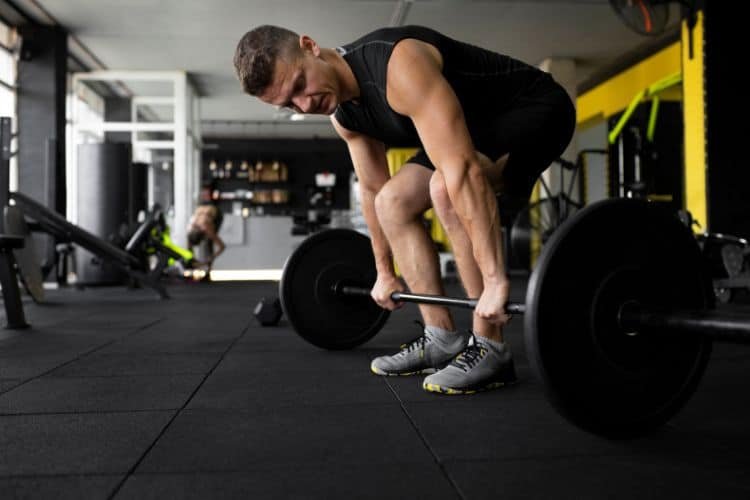
The Farmers Walk workout is an underrated, yet highly effective, exercise that delivers a wealth of benefits. From building muscle to improving grip strength, balance, and endurance, the Farmers Walk covers it all. This article will cover what the Farmers Walk entails, its primary benefits, how to incorporate it into a workout routine, and variations that help maximize results.
What is the Farmers Walk Workout?
The Farmer’s Walk, also known as the Farmer’s Carry, is a functional exercise where you carry heavy weights in each hand while walking a set distance. It’s often performed with dumbbells, kettlebells, or specialized Farmer’s Walk bars, but the simplicity of the exercise is deceptive. Not only does it challenge your strength, but it also recruits multiple muscle groups and pushes your cardiovascular system.
The Farmer’s Walk is rooted in strength training and has been popularized by Strongman competitions. However, it’s a versatile exercise that can be included in any fitness routine, making it popular for both strength athletes and those looking to enhance their overall fitness levels.
Benefits of the Farmers Walk Workout
1. Full-Body Strength Development
The Farmer’s Walk is one of the best full-body strength exercises because it activates nearly every muscle in the body. From your shoulders, arms, and forearms to your core, glutes, and legs, every step requires muscle activation. This exercise is particularly effective at building upper body strength since you have to stabilize the weight while walking, strengthening your grip, traps, shoulders, and core.
2. Core Stability and Balance
Carrying heavy weights while walking forces your core to stabilize and keep you upright, improving balance and stability. Unlike static core exercises, the Farmer’s Walk requires dynamic stability, as your core must adjust to each step and shift of weight. This workout translates into better functional strength, reducing the risk of injury and enhancing athletic performance.
3. Enhanced Grip Strength
Grip strength is a limiting factor in many exercises, but it’s also crucial for everyday tasks. The Farmer’s Walk is one of the best exercises to build forearm and grip strength, as holding onto heavy weights challenges your hands, wrists, and forearms. Improving grip strength can lead to better performance in other lifts and functional tasks.
4. Cardiovascular and Endurance Benefits
While primarily a strength exercise, the Farmer’s Walk also offers cardiovascular benefits. Carrying heavy weights while walking elevates the heart rate, providing a conditioning effect. With practice, you’ll be able to carry weights for longer distances, which improves your endurance. This combination of strength and endurance training is rare and incredibly effective.
5. Functional Strength
Unlike machines or isolated exercises, the Farmer’s Walk is a functional movement that mimics everyday activities, such as carrying groceries or lifting heavy objects. This type of training is particularly beneficial for athletes and people who need practical strength that transfers to real-life tasks. Farmer’s Walks strengthen the body in a way that’s directly applicable to daily life and athletic activities.
How to Perform the Farmers Walk Workout
Performing the Farmer’s Walk with proper technique is essential to maximize benefits and avoid injury.
- Choose Your Weights: Select weights that are heavy enough to challenge you but light enough for you to maintain good form. You can use dumbbells, kettlebells, or specialty Farmer’s Walk handles.
- Hold the Weights at Your Sides: Pick up the weights and hold them at your sides with a firm grip, keeping your arms straight but relaxed. Your shoulders should be pulled back, and your chest lifted.
- Engage Your Core and Start Walking: Begin walking forward with small, controlled steps. Keep your core engaged to prevent swaying or leaning.
- Keep a Neutral Spine: Avoid arching or rounding your back. Focus on good posture to prevent strain on your lower back.
- Walk a Set Distance or Time: You can walk for a specific distance (e.g., 20-40 yards) or a set time (e.g., 30-60 seconds).
- Rest and Repeat: Put the weights down carefully after completing the set and take a short rest. Repeat for 3-4 sets, depending on your fitness level.
Tips for Perfecting the Farmer’s Walk Technique
- Avoid Slouching: Keep your shoulders back and your chest up throughout the movement.
- Focus on Each Step: Take controlled steps instead of rushing.
- Breathe Regularly: Don’t hold your breath; breathe steadily to keep oxygen flowing to your muscles.
Farmer’s Walk Variations for Different Goals
There are several variations of the Farmer’s Walk that target different muscles or emphasize certain fitness components. Here are some popular options:
1. Single-Arm Farmers Walk Workout
The single-arm Farmer’s Walk, or suitcase carry, involves carrying weight in only one hand. This variation requires additional core stabilization to keep your body upright. It’s great for targeting the obliques and can improve imbalances in strength.
- How to Perform: Hold a single weight on one side of your body, walk a set distance, then switch arms.
2. Overhead Carry
The overhead carry increases shoulder stability, balance, and core strength, making it ideal for athletes. This variation is more challenging because holding the weight overhead engages the shoulders and back muscles intensely.
- How to Perform: Hold a dumbbell or kettlebell overhead with one or both arms and walk a set distance.
3. Front Rack Carry Farmers Walk Workout
The front rack carry involves holding weights at shoulder height, challenging the core and shoulder stability. This variation is beneficial for improving posture and core strength.
- How to Perform: Hold weights at shoulder level in a front rack position and walk forward, maintaining good posture.
4. Bottoms-Up Carry
This advanced carry requires you to hold a kettlebell upside down (by the handle), which demands exceptional grip strength and shoulder stability.
- How to Perform: Grip the handle of a kettlebell with the weight facing upward and walk a set distance. Switch arms and repeat.
5. Offset Farmers Walk Workout
In this variation, you hold different weights in each hand, which adds an extra layer of instability. This variation is great for addressing muscle imbalances and increasing core engagement.
- How to Perform: Hold a heavier weight in one hand and a lighter weight in the other. Walk a set distance, then switch hands.
Incorporating the Farmers Walk into Your Workout Routine
The Farmer’s Walk is a versatile exercise that can be incorporated into various parts of a workout routine.
Warm-Up
Using lighter weights, you can perform the Farmers Walk as part of your warm-up to activate and engage your core and shoulders. It’s an effective way to prepare your body for heavier lifting by waking up stabilizing muscles.
Strength Training
In a strength-focused session, use the Farmer’s Walk as a core or grip training exercise. Pair it with other compound movements like deadlifts, squats, or bench presses for a complete strength circuit.
Cardio Conditioning
By using lighter weights for longer distances, the Farmer’s Walk can double as a cardio workout. Incorporate it into your high-intensity interval training (HIIT) or metabolic conditioning circuits.
Cool Down
A Farmer’s Walk with a moderate weight can be a unique cool-down exercise, especially if you lower the weight and walk at a slower, controlled pace to focus on form and stability.
Farmers Walk Workout Plans
Beginner Farmer’s Walk Routine
- Warm-Up: Light dumbbell Farmer’s Walk, 30 seconds x 3 sets
- Strength: Heavy Farmer’s Walk, 20-30 yards x 3 sets
- Cooldown: Lighter single-arm carry, 20 yards per arm x 2 sets
Intermediate Farmer’s Walk Routine
- Warm-Up: Kettlebell Front Rack Carry, 20 yards x 3 sets
- Strength: Heavy Offset Farmer’s Walk, 20-40 yards x 4 sets
- Conditioning: Light to moderate weight Farmer’s Walk, 1-minute intervals with 30 seconds rest x 3 rounds
Advanced Farmers Walk Workout Routine
- Warm-Up: Bottoms-Up Carry, 20 yards x 3 sets
- Strength: Overhead Carry, 30 yards x 4 sets
- Strength & Conditioning Combo: Heavy single-arm carry, 30 seconds per arm x 4 sets
- Cool Down: Light Farmers Walk Workout, 40-50 yards x 2 sets
Common Mistakes to Avoid
Using Weights That Are Too Heavy
While it may be tempting to load up on weight, using weights that are too heavy can compromise your form. Start with a manageable weight and gradually increase as your strength improves.
Neglecting Core Engagement
Your core is crucial in stabilizing the weights and maintaining posture. If you’re not actively engaging your core, you’re missing out on many of the exercise’s benefits and increasing your risk of injury.
Taking Large, Uncontrolled Steps
When performing the Farmer’s Walk, your steps should be controlled and steady. Avoid rushing, as this can lead to instability and compromise your posture.
Final Thoughts on the Farmer’s Walk Workout
The Farmers Walk Workout is a powerful exercise that goes beyond traditional strength training. It offers a unique combination of strength, endurance, and functional fitness benefits, making it suitable for various fitness levels and goals. Whether you’re a beginner or an experienced lifter, incorporating the Farmer’s Walk into your routine can provide substantial benefits. Its adaptability and simplicity make it a must-try addition to any workout plan.









